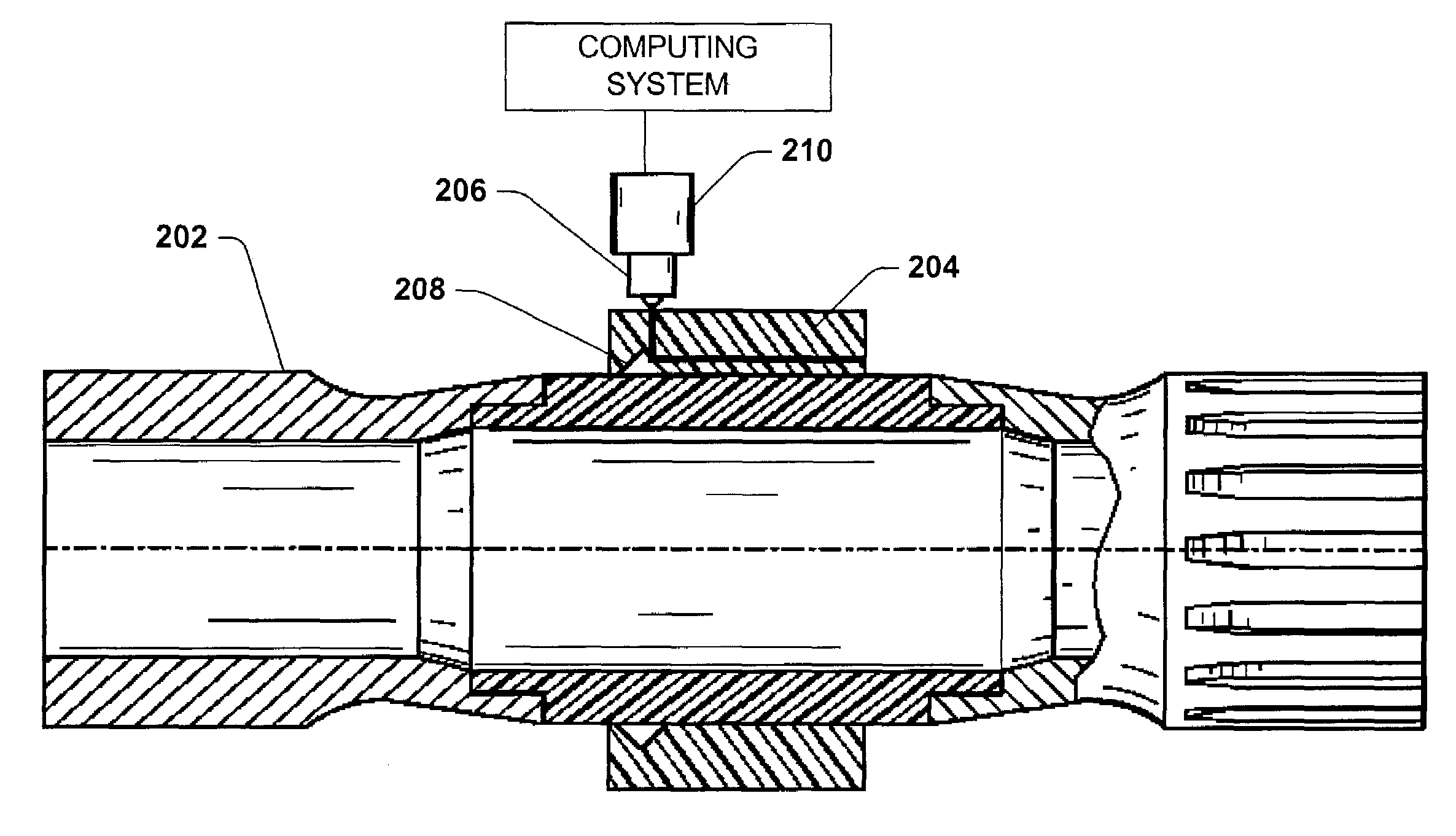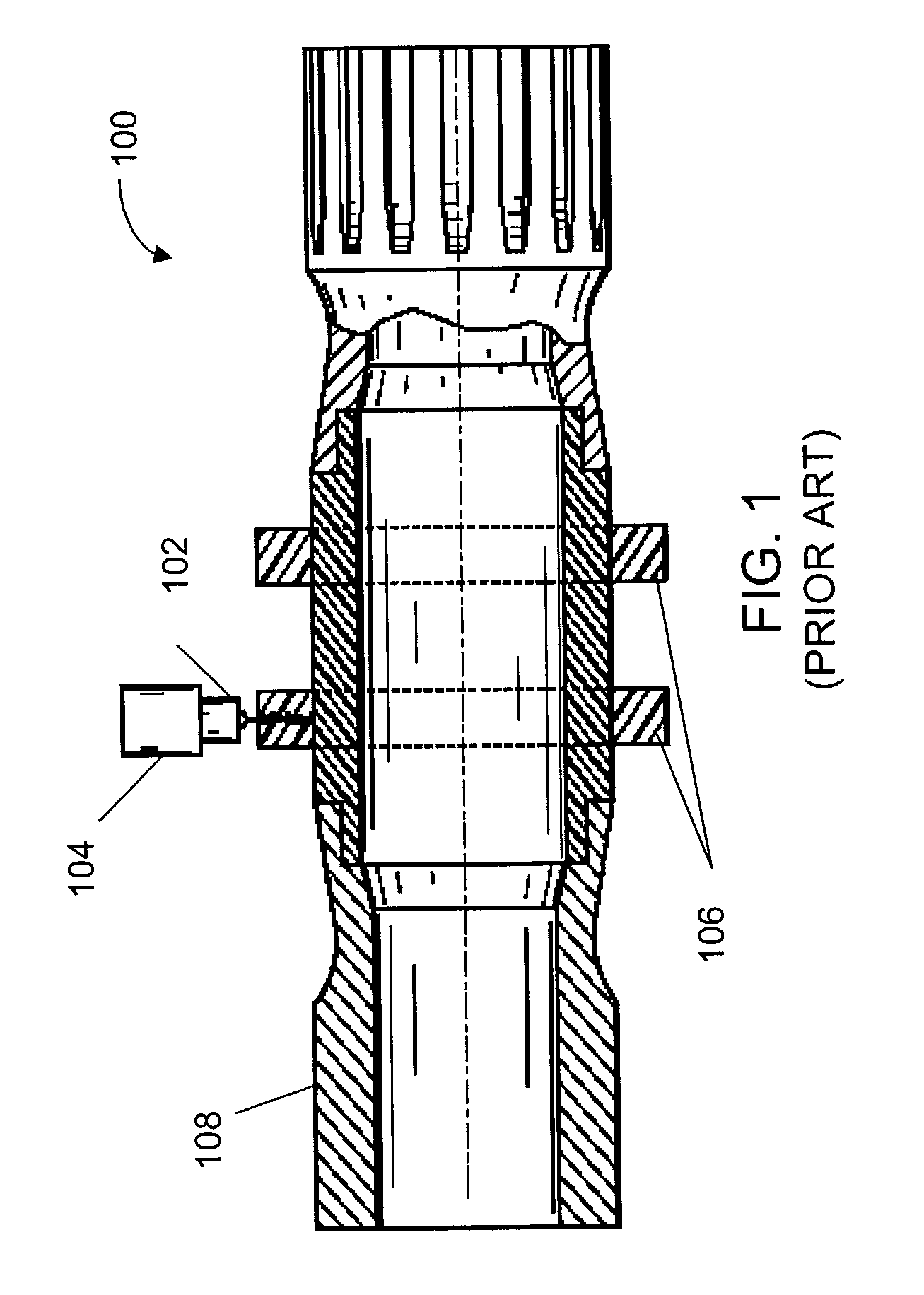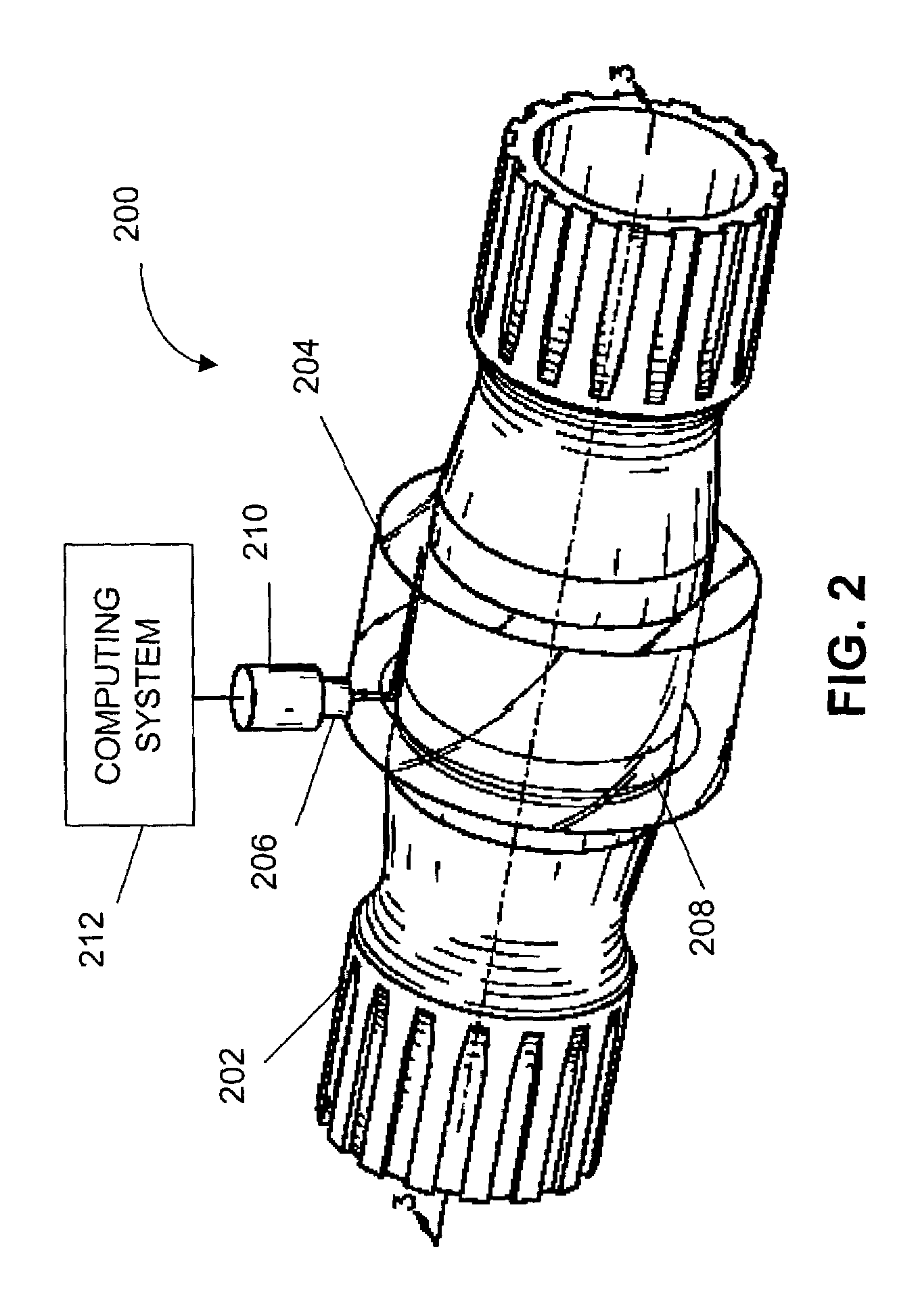[0010]The present invention provides for an
optical sensing system that facilitates measuring torque in a shaft and gathers significantly more data than the aforementioned prior art systems, and accordingly provides a more comprehensive analysis with respect to shaft analysis. Light emitted from a
light source is directed through a photo-elastic material in an axial direction along a rotating shaft, thus allowing for a significantly greater amount of coverage area from which the sensor can detect torsional strain, for example. The
optical sensing system of the subject invention can also be used for high-frequency
load sensing, lateral
load sensing, and surface monitoring as well as measuring rotational speed, displacement, acceleration, vibration, temperature, stress, etc. Through use of
external storage and display components, properties of the shaft (e.g., torque, rotational speed, displacement . . . ) can to stored and / or displayed, wherein the properties to be stored and / or displayed are predefined and / or
user defined and / or dynamically determined based on context as well as
user state. Thus, the invention provides a flexible and robust system and method for determining torque on a rotating shaft while minimizing weight and cost of a corresponding sensing device.
[0011]In accordance with one aspect of the present invention, a portion of a rotating shaft is encircled by a sleeve of photo-elastic material, wherein the photo-elastic sleeve is attached to the shaft. For example, the photo-elastic sleeve can be cast, machined, or even sprayed onto the shaft. A
light source is employed to deliver light that will travel along the axis of the shaft through the photo-elastic sleeve. The
light source can be placed at any suitable angle to the rotating shaft, so long as the light delivered is redirected through the photo-elastic sleeve along the axis of the shaft. For instance, a light source can be configured to deliver light perpendicularly to the shaft into the photo-elastic sleeve, wherein the light is redirected by a reflective notch (e.g., v-groove)
cut at an angle (e.g., 45°) to the light source, thereby redirecting the light along the axis of the shaft. V-groove faces can optionally be covered with a thin strip of reflective material (e.g., Mylar®) to provide a
specular surface with minimal light
distortion. At least one end of the collar of the photo-elastic material can be coated with a reflective substance (e.g., aluminum filled
epoxy), thus requiring a beam of light emitted from a light source to reflect back along the same path. Requiring a beam of light to
traverse the photo-elastic sleeve twice (e.g., once prior to reaching the reflective edge and once upon reflection) results in a more thorough analysis of strain on the shaft. Since a number of fringes (discussed in greater detail below) increases linearly with
optical path length, sensitivity of the optical
sensing system is also increased as a function of length of the photo-elastic material. It is to be understood, however, that a reflective substance on a collar of the photo-elastic sleeve is not required to practice the invention, as strain on the shaft can be determined when a beam of light passes through an end photo-elastic sleeve an data collected at such end as compared to the light reflecting backward from such end.
[0013]The subject invention can be implemented with any rotating shaft that may incur strain from driving a load. For example, the invention could be employed to determine the torque and strain on a
turbine drive shaft, a
drive shaft on a
truck or automobile, a shaft driving a helicopter blade, etc. The invention can also be coupled to a
control system, thereby protecting the shaft from failure due to excessive torque. A
control system can also be employed in connection with the present invention to control operation of the shaft by utilizing one or more parameters that can be sensed by the sensor (e.g., rotational speed, acceleration, displacement, vibration, temperature, torque, stress . . . ). For example, this provides an
effective method for
constant torque control. Furthermore, the invention can be used in connection with a
diagnostic system, wherein upon reaching a critical point of strain the
diagnostic system will inform an operator that repair or replacement of the shaft is necessary. In another embodiment, a prognostic system utilizing inferential techniques can be employed to predict a time in the future when repair or replacement of the shaft will be necessary. Lastly,
high frequency analysis of the torque
signal using established
frequency domain or joint time-frequency methods can be a very effective, low cost,
diagnostic tools. Also, the broad inspection sensing area can provide a capability to inspect
composite joint(s) dynamics.
 Login to View More
Login to View More  Login to View More
Login to View More 


